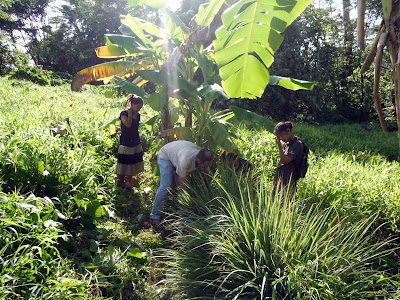FaceBook unsourced photo autotag suggestions

Many Micronesians live and word abroad and while digital cameras are increasingly common in the home islands, few are taking pictures of everyone and anyone with the intent of sharing to the diaspora. As a result I frequently get requests from non-friends to tag images I have posted to FaceBook. On the photo tag request page those appear in the form "John Carrot tagged Jane Cucumber" with Confirm and Ignore buttons. Thus I was puzzled when I saw the following. Facebook user? Facebook user who? Rather than Confirm or Ignore, I went to the image. , An apparently anonymous tag request? My presumption is that FaceBook facial recognition bots are now making tag requests, although an alternative hypothesis would be that one can set one's privacy in such a way as to block your own identity when tagging a photo. Although the former hypothesis seems more reasonable, all three tags are on a scanned picture from 1994 and all three are correct, including the profile view. Th






